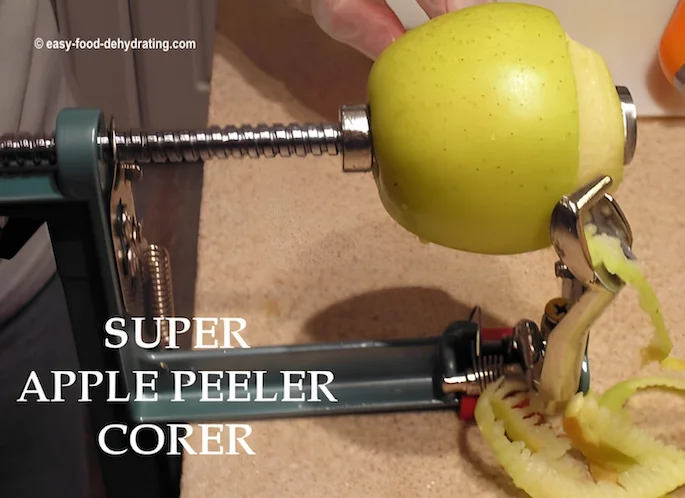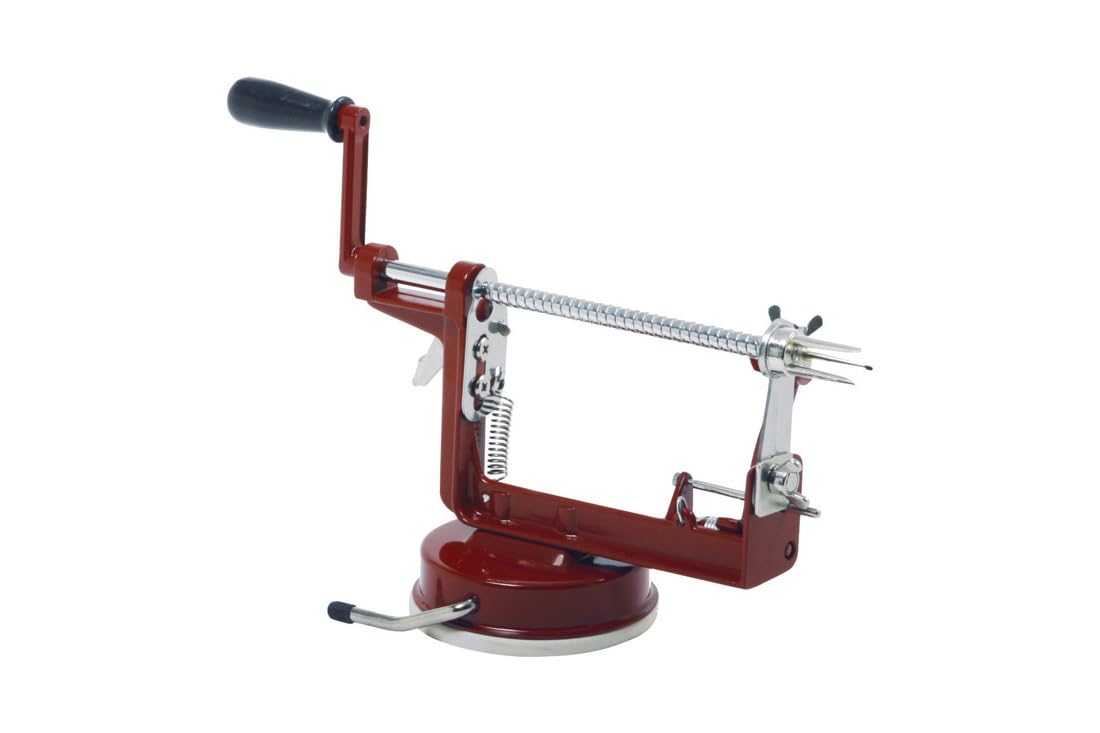What We Mean by “Dehydrate”
Here at Easy Food Dehydrating, “dehydrate” always means using an electric food dehydrator — the easy, reliable way to dry food at home.
- Home
- Dehydrating Fruits: Step-by-Step Guides by Type
- How to Dehydrate Apples
How to Dehydrate Apples for Snacks,
Pies & Pantry Storage

Dehydrating apples at home is one of the easiest and tastiest ways to stock your pantry with healthy snacks. Not only do they make a chewy, naturally sweet treat, but they also store beautifully for months—perfect for quick snacking, baking, or even camping trips.
✅ Quick Answer: How do you dehydrate apples at home?
Slice and core apples, spray with lemon juice to prevent browning, and place slices on dehydrator trays. Dry at 125°F–135°F for 4–10 hours until bendable and leathery. Store in airtight containers with oxygen absorbers for months of snack-ready apples.
With just a few simple steps, you can transform fresh or frozen apples into crispy chips or soft, leathery slices that lock in flavor without added sugar. Let’s dive into how you can do it yourself!
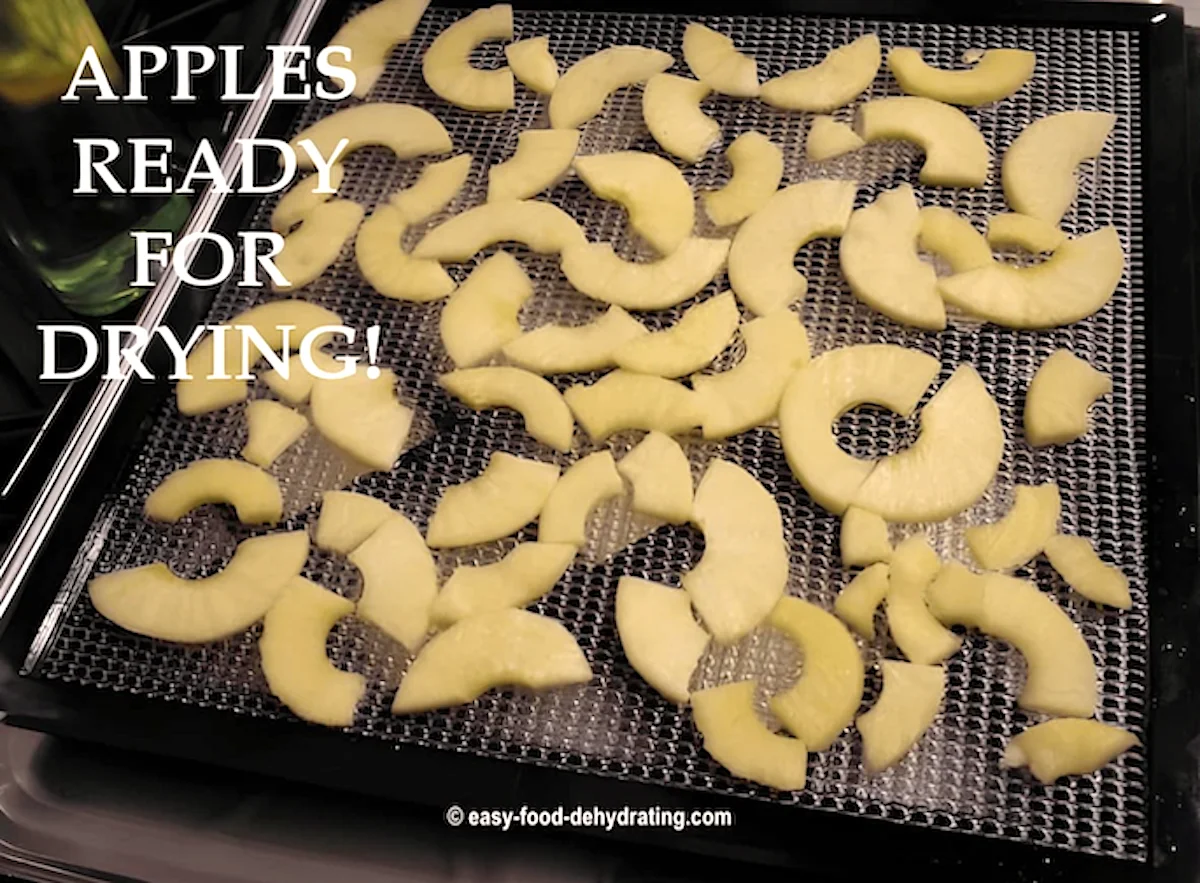
Why Make Your Own Dehydrated Apples?
Create your own supply of dried apples at home so they'll be available to you all year round! How do you do that?
Dehydrate apples when they're on sale (and in season) and store them.
Nutrition Benefits of Apples
VITAMINS: Vitamin A, and Vitamin C, followed by Vitamin K with trace amounts of Choline, Pantothenic Acid, and Niacin.
MINERALS: Potassium, followed by Phosphorus, Calcium, Magnesium, and trace amounts of Zinc.
Apples also contain Omega-3 and Omega-6 fatty acids.
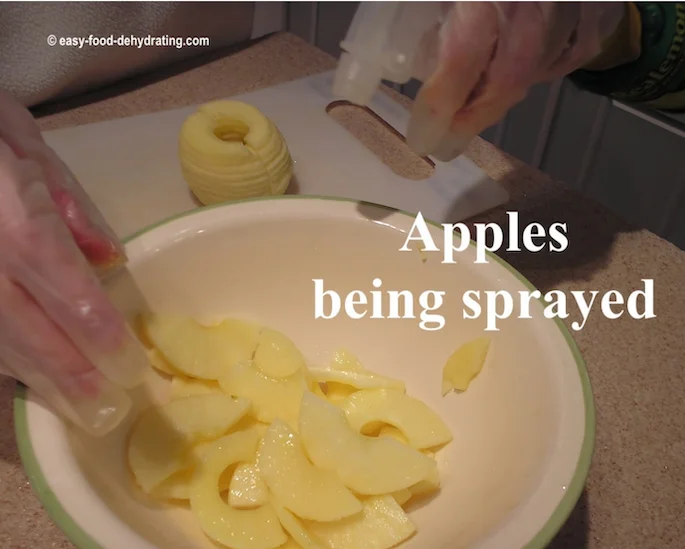
Stop Browning Fast: The One Trick Every Apple Needs
To prevent oxidation while dehydrating apples (that's what makes the apples turn brown - and bananas too) - spray the apples with good old lemon juice. I use the ReaLemon brand, but any "off-brand name" will work just as well!
Professional food dehydration plants use ascorbic acid to prevent/slow down oxidation.
TIP: When apples are out of season, use frozen apples instead. As noted below in the instructions for dehydrating apples, you won't have the peel the apples, plus you don't need to use apple juice to spray the apples in step 2 because the manufacturers did that step for us when they froze them. Now how easy is that?
Step-by-Step: The Easiest Method for Drying Apples
If using frozen apples, ignore steps 1 and 2.
- Peel, core, and slice your apples by hand or with a handy apple-peeler-corer gadget.
- Place slices in a bowl and generously spray with lemon juice. TIP: Use a pump top from a new unused spray bottle, pick one that fits your lemon juice bottle, and look for one that has a long enough plastic tube that will reach the bottom of your lemon juice bottle.
- Arrange the apple slices on your dehydrator trays, making sure the apples don't overlap.
- Turn on your food dehydrator and set the temperature between 125°F and 135°F (or per your food dehydrator's instructions).
💡 Tip: Outside the U.S.? Most dehydrating temps here are listed in Fahrenheit - use our quick converter to see the Celsius equivalent for your machine.
- Delicious dried apples are pliable when dried.
- Drying time: between 4-10 hours.
- Please remember to rotate your dehydrator trays for even drying.
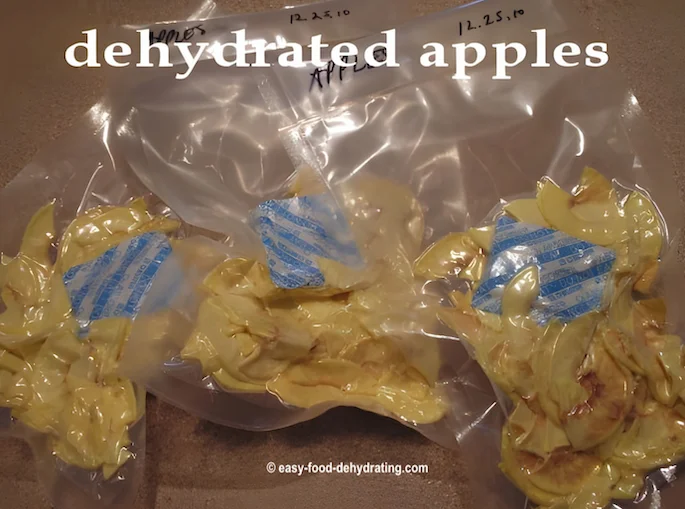
Rehydrating Dried Apples for Pies, Breads & More
Simply add water to your dried apples to rehydrate them. Read more about re-hydrating food here and we're off making the best apple pies around!
How about applesauce, or apple breads, or cookies? Mmm :-) Soon the delicious apple pie aroma from your kitchen will draw friends and neighbors for miles!
My Favorite Apple Peeler-Corer (Bonus: Potato Peeler!)
You'll want one of those apple peeler corer gadgets that I'm using shown above.
Not only are they easy to use, they are truly fascinating to watch them do their job.
Take the grunt work out of spud peeling—yes, you can peel potatoes with them too!
As an Amazon Associate, I earn commission from qualifying purchases. The price you pay does not increase. Read disclosure here.
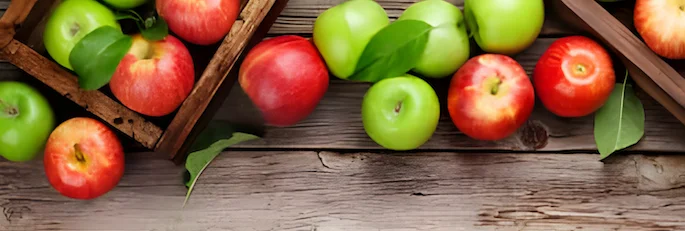
Best Apple Varieties for Drying (and Why They Work)
While there are many different types of apples, the most common type is the red delicious apple. Other popular types of apples include:
- Granny Smith
- Golden Delicious
- Rome
Each type of apple has its own unique flavor, so be sure to try a few different kinds to find your favorite.
Frequently Asked Questions
What’s the best apple variety for dehydrating?
What’s the best apple variety for dehydrating?
Firm, sweet-tart apples like Fuji, Honeycrisp, or Gala work best because they hold shape and flavor. Avoid mealy varieties like Red Delicious unless making applesauce.
Do I need to peel apples before dehydrating?
Do I need to peel apples before dehydrating?
No - you can leave the peel on to retain fiber and nutrients. Peeling gives a softer texture, so it comes down to personal preference.
Can you dehydrate apple peels?
Can you dehydrate apple peels?
Yes! You can dehydrate apple peels and here are a few reasons why you should:
- Nutrients in the peel - Apple peel contains a lot of beneficial fiber and polyphenol antioxidants. Drying apple peels preserves these nutrients for use later.
- Natural pectin source - Dehydrated apple peels can be ground into a powder to use as a natural pectin replacement in jams, jellies, fillings, etc. The pectin comes from the peel.
- Tea or supplement ingredient - Dried apple peel powder can be used in herbal teas, capsules, and baked goods for extra nutrition.
- Food flavoring/garnish - Dehydrated apple peels lend a nice sweetness and pretty garnish to dishes like oatmeal, yogurt, and salads when rehydrated.
The key when drying apple peel is to thoroughly wash/clean the apples first and pat the peels dry before dehydrating. Monitor the peels closely for doneness so they don't over-dry or burn. It's a great use for what we might think of as apple "waste"!
Can you dehydrate apples in the oven instead of a dehydrator?
Can you dehydrate apples in the oven instead of a dehydrator?
Yes, set your oven to its lowest temperature (around 170°F), place slices on a lined baking sheet, and crack the door slightly for airflow. Drying may take 6–12 hours.
How do you store dehydrated apples long-term?
How do you store dehydrated apples long-term?
Once fully dried, store apples in airtight jars or vacuum-sealed bags with oxygen absorbers. Keep in a cool, dark pantry for 6–12 months.
How can I use dehydrated apples besides snacking?
How can I use dehydrated apples besides snacking?
Add them to oatmeal, granola, trail mix, or baked goods. You can also rehydrate them for pies, cobblers, breads, or even savory pork dishes.
Dehydrated apples are a simple way to keep a healthy, versatile snack on hand for baking, hiking, or everyday munching.
And if you’d like even more easy ideas, don’t miss my free 5 Dried Food Recipes You’ll Actually Love PDF below—it includes carrot soup, minestrone, split pea soup, spicy beef jerky, and even banana cinnamon rolls!
Get 5 Dried Food Recipes You'll Actually Love
Here's where you can get your copy of our all new
5 Dried Food Recipes (That Actually Taste Great)
They're my all-time favorite easy dried food meals!
Get it here right now.
For Free!
Before You Go...
If you enjoyed this page, tap the ❤️ in the lower right-hand corner.
It saves this page to your Grow bookmarks so you can find it again later.
You’ll also see quick share buttons to copy the link, post to Facebook,
or save it straight to Pinterest.
